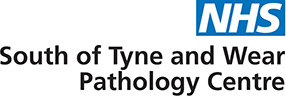Allergen Specific IgE
Code:
Please refer to specific allergen needed
Sample Type:
2mL Serum (Gel 5mL Yellow tube) N.B. Volume required will depend on the number of specific IgEs requested
Ref Ranges/Units:
Allergen Specific IgE levels can be reported in grades (0 to 6) or in units (KUA/L). Normal value is <0.35 KUA/L or grade 0. Reference ranges established by manufacturer with “in house” verification.
kUA/L or Grade
Frequency of Analysis: Daily. N.B. Some specific IgEs are not available locally. These will be referred to Sheffield on a daily basis.
Turnaround:
3 days
Special Precautions/Comments:
Method: Primary method is FEIA (Fluorescence Enzyme Immunoassay). Calibration: The units used are related to the total IgE 2nd IRP 75/702. EQA Scheme: UK NEQAS scheme for Allergen specific IgE. IQC: Commercial preparation
Interferences: Not Known
Interpretation: Specific IgE antibody results should be interpreted in relation to the clinical features, allergic history and other tests performed to assess allergic status.
Additional Information:
Indication: Assessment of allergy.
Background Information: Allergies result from an inappropriate reaction to a usually innocuous environmental protein, or allergen. The sources of allergen vary widely from pollens, foods, drugs and animal hair, etc. They most frequently present as rhinitis, asthma, atopic dermatitis and other skin manifestations, and occasionally as life-threatening anaphylactic shock [3]. Allergen specific IgE can be present in the blood of allergic individulals [1,2]. IgE in serum has no known biological relevance, exerting its activity only when bound to blood basophils or tissue mast cells. Antigen binding membrane bound IgE will specifically release preformed mediators from these cells, responsible for immediate hypersensitivity reactions. It is the action of the mediators that is responsible for the symptoms seen when having an allergic reaction [3]. The allergen-specific IgE antigen test is done to screen for an allergy (a type I hypersensitivity) to a specific substance or substances in response to acute or chronic allergy-like symptoms in the patient. The level of IgE present does not correlate to the severity of an allergic reaction, and where allergy has been outgrown a positive specific IgE may still be present. It is possible to have a postive specific IgE result to an antigen that is not a cause of allergy in the patient. It is essential that the results are interpreted alongside a full allergic history and any tests that have been performed, such as skin prick tests [2]. Guidelines are available from the British Society of Allergy and Clinical Immunology (BSACI) which cover areas related to the assessment and management of various allergies, including drug allergy, rhinitis and latex allergy.
Reporting: Grade Units Interpretation 0 <0.35 Negative 1 0.35 to 0.7 Weak Positive 2 0.7 to 3.5 Positive 3 3.5 to 17.5 Positive 4 17.5 to 52.5 Strong Positive 5 52.5 to 100 Strong Positive 6 >100 Strong Positive
References: Nauta AJ, et al. Mechanisms of allergy and asthma. European Journal of Pharmacology. 2008. 585:354-360. [Ref 1]. PRU Handbook of Clinical Immunochemistry. 9th Edition. 2007. [Ref 2] Plebani M. Clinical value and measurement of specific IgE. Clin Biochem. 2003. 36(6):453-469. [Ref 3] Gould HJ, et al. The biology of IgE and the basis of allergic disease. Annu Rev Immunol. 2003. 21:579-628
Gateshead Lab: 0191.4456499 Option 4, Option 1


